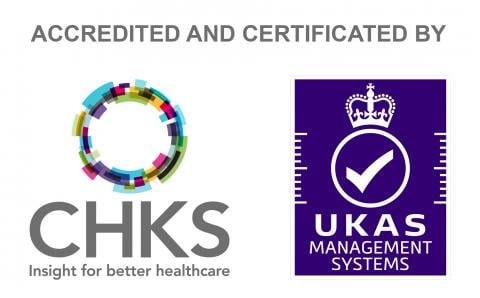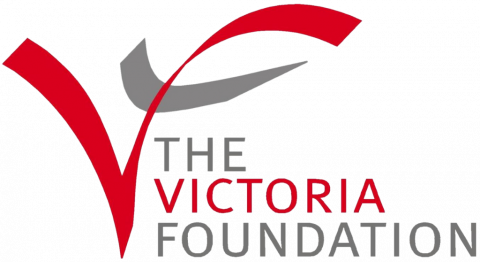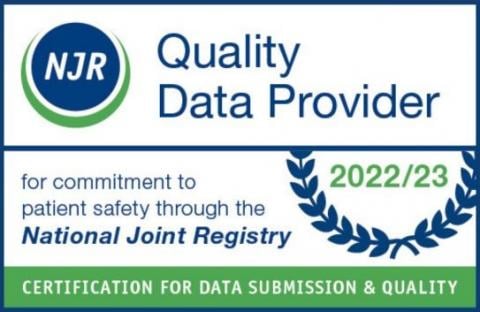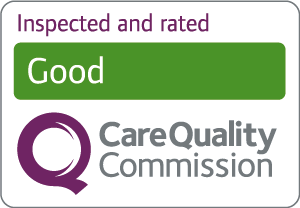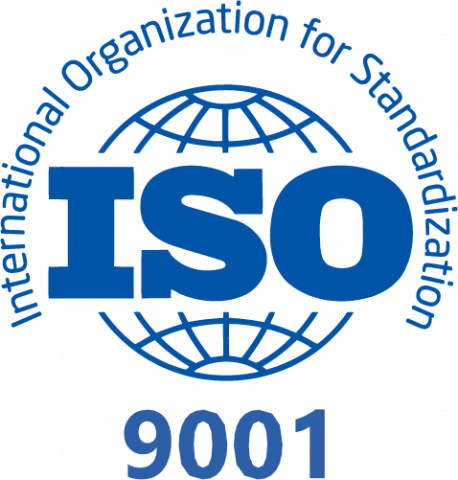
If you are approaching menopause or already navigating this natural transition, you are probably familiar with the hot flushes, night sweats, and mood swings that often come with it. But did you know that joint aches and muscle pains can also be part of the package? Research suggests that up to 70% of women will experience musculoskeletal symptoms during perimenopause and menopause, and in around 25% of women these symptoms can be severe.
In this article, Dr Dobrina Hull, our Rheumatology Consultant at New Victoria Hospital, breaks down the reasons behind joint pain symptoms, otherwise known as the musculoskeletal syndrome of menopause, and how you can find relief.
Menopause symptoms and effects on health
Menopause is a natural phase in a woman’s life, typically occurring between the ages of 45 and 55. It is diagnosed after 12 months without a menstrual period; however, it is during the lead-up to menopause, known as perimenopause, when hormonal changes really start to ramp up, causing all the familiar and frustrating symptoms.
There are over 35 symptoms known to be associated with menopause and, while much attention is given to the more commonly experienced ones, like hot flushes and night sweats, musculoskeletal symptoms are less often associated with it – despite being just as common and often debilitating.
Musculoskeletal Syndrome of Menopause
So, what exactly is MSM syndrome? Musculoskeletal syndrome of menopause is a collective term that has been defined covering a range of symptoms that can affect bones, muscles, joints, and connective tissues during peri and menopause, leading to discomfort and decreased quality of life. These symptoms can include:
- Joint pain and stiffness
- Muscle pain and cramps
- Pain at entheses – the sites where ligaments and tendons attach to bone
- Loss of muscle mass and strength
- Decreased bone density (osteoporosis)
- Tendon and ligament issues, such as tendonitis and bursitis
By understanding these symptoms and their causes, you can take proactive steps to manage and alleviate them.
Why does Menopause affect your joints?
There are several possible reasons, but it all appears to come down to hormones, especially oestrogen. Oestrogen plays a major role in building and keeping your bones, joints, and muscles healthy, and even helps them to repair quicker after an injury. As oestrogen levels drop, so does its anti-inflammatory magic. As a result, joints can feel stiff and sore, while muscles can become weaker and less responsive to exercise, leading to muscle aches and fatigue.
Studies show that declining oestrogen plays a role in loss of lean muscle mass that is independent of aging. This not only contributes to discomfort, but can also make you more prone to injuries. What’s more, low oestrogen levels also affect how your body processes pain, making you more sensitive to discomfort.
Additionally, menopause can worsen and even trigger osteoarthritis a condition that causes painful, swollen, and stiff joints due to the breakdown of cartilage.
But it’s not all bad news! There are ways to manage and ease these symptoms.
Symptoms and signs of Musculoskeletal Syndrome of Menopause
The musculoskeletal system comprises bones, muscles, joints, and connective tissues, like tendons and ligaments. Here is a closer look at how this system can be affected by the menopause:
Joint pain and stiffness
Many women will experience joint pain and stiffness, especially in the hands and wrists, knees, hips, and shoulders. Stiffness can be worse in the mornings, or after periods of inactivity.
Muscle pain and weakness
Muscle aches, cramps, and weakness can become more prevalent during menopause, and this can impact everyday activities or exercise. This occurs as reduced oestrogen levels can affect muscle mass and strength, leading to discomfort and fatigue.
Reduction in bone density
Osteoporosis is more common in women after menopause, where bone density declines and bones become more fragile and susceptible to fracture. Studies have shown that up to 1 in 2 women over the age of 50 will have a fracture due to low bone density. Oestrogen plays a crucial role in maintaining bone density, and its decline during menopause accelerates bone loss. The Royal Osteoporosis Society has a very useful online osteoporosis risk checker which can provide you with a personalised report on your bone health.
Reduction in flexibility and mobility
The combination of joint and muscle issues can lead to decreased flexibility and mobility, making movements stiffer and slower. Stiff joints, loss of muscle mass, and elasticity in connective tissues contribute to this reduced range of motion and increased propensity to strains and injuries. Frozen shoulder can be common at this stage.
Tendon and ligament issues
Tendonitis (inflammation of tendons, such as tennis elbow and tendonitis of the shoulder), enthesitis (inflammation where tendons and ligaments attach to bone, such as plantar fasciitis and Achilles tendonitis) and bursitis (such as subacromial bursitis of the shoulder or trochanteric bursitis of the hips) can be more common. The decline in oestrogen affects collagen production, affecting the function of tendons and ligaments, making them more prone to injury and inflammation.
How to manage joint aches and pains caused by Menopause?
The good news is, while menopause can bring about some unpleasant changes, there are several strategies you can adopt to manage and alleviate them.
Regular exercise
Keep moving! Even when you are sore, movement is crucial. It helps both physical and mental health, alleviates joint ache and stiffness, and is important in maintaining muscle mass and bone density.
- Low impact exercise, such as swimming, cycling, or walking is a good option if you want to limit the pressure you put on your joints. Gentle, controlled stretching, such as with yoga and Tai Chi, can help your joints become less stiff and painful.
- Pilates can help to improve flexibility and build core strength to maintain balance and stability.
- Strength training, also known as resistance training or muscle strengthening exercise, at least twice a week, is important to prevent loss of muscle mass and strength as we age. This does not mean you have to lift weights or go to the gym, but activities like carrying your shopping, climbing stairs, gardening and dancing all count.
- Incorporating weight bearing exercise is also important to maintain bone density, this can include walking and climbing stairs.
Healthy diet
What you eat affects your health and wellbeing. To keep joints and bones healthy, aim for foods rich in vitamin D, calcium and omega-3 fatty acids. A diet rich in fruits, vegetables, pulses, whole grains, lean protein and oily fish, such as the Mediterranean diet, has been shown to have wider health benefits, including on heart health and joints.
Weight management
Excess weight can accelerate joint wear and tear, so keeping it in check will reduce pressure on your joints and prevent the onset of osteoarthritis.
Hormone replacement therapy (HRT)
HRT works by topping up low oestrogen levels and is often used to relieve menopause symptoms, including joint pain. There are several factors as well as options to consider, including gels, patches, sprays and tablets. A medical professional can help you decide what is right for you.
Supplements
Glucosamine and chondroitin supplements can help support joint health. Turmeric supplements have been shown to have anti-inflammatory and pain relieving properties in people with osteoarthritis. Vitamin D and calcium are important to support bone health. Always check with a healthcare professional before starting any new supplements or medications.
Physiotherapy
Physiotherapists are movement experts who can advise you on the best exercise programmes for this period in your life and can help manage a variety of conditions, including muscle and joint pains.
When to seek medical attention?
While many joint symptoms can be managed with lifestyle changes and over-the-counter remedies, there are times when some symptoms and signs should lead you to seek medical advice. Around the time of menopause, there is also an increased incidence of other musculoskeletal conditions that can develop, causing joint symptoms, such as rheumatoid arthritis, polymyalgia rheumatica (PMR), and gout.
We would recommend you seek medical attention if you are experiencing:
- Severe or persistent joint or muscle pain: Pain that does not improve with self-care measures or interferes significantly with daily activities.
- Joint swelling: Any noticeable swelling in one or more joints that does not subside.
- Joint deformity: Any visible change in the shape or alignment of your joints.
- Persistent morning stiffness: Stiffness in the joints that comes on in the early hours of the mornings, or lasts for longer than 60 minutes once you are up and about, can be a sign of joint inflammation caused by arthritis and may need further investigation.
- Reduced mobility: Difficulty moving a joint, or performing everyday tasks.
- Signs of infection: Redness, warmth, and fever alongside joint pain may indicate an infection and requires urgent medical attention.
- Bone health: Post-menopausal women need to have an assessment of bone health and fracture risk to proactively manage any reduction in bone density, ideally before a fracture occurs. You can use The Royal Osteoporosis Society’s online risk checker to assess your bone health and obtain a personalised report with advice on whether further investigations or interventions may be advisable.
Musculoskeletal Syndrome of Menopause is common, but it does not have to take over your life! By recognising the symptoms early, staying active, eating well, and working with healthcare professionals, you can manage these symptoms and continue to live a full and active life. Remember, menopause is a natural transition, and with the right support tailored to your needs, you can feel empowered to take control of your health.
To book an appointment with our Consultant Rheumatologists, please call us on 020 8949 9020 or complete our online form:



